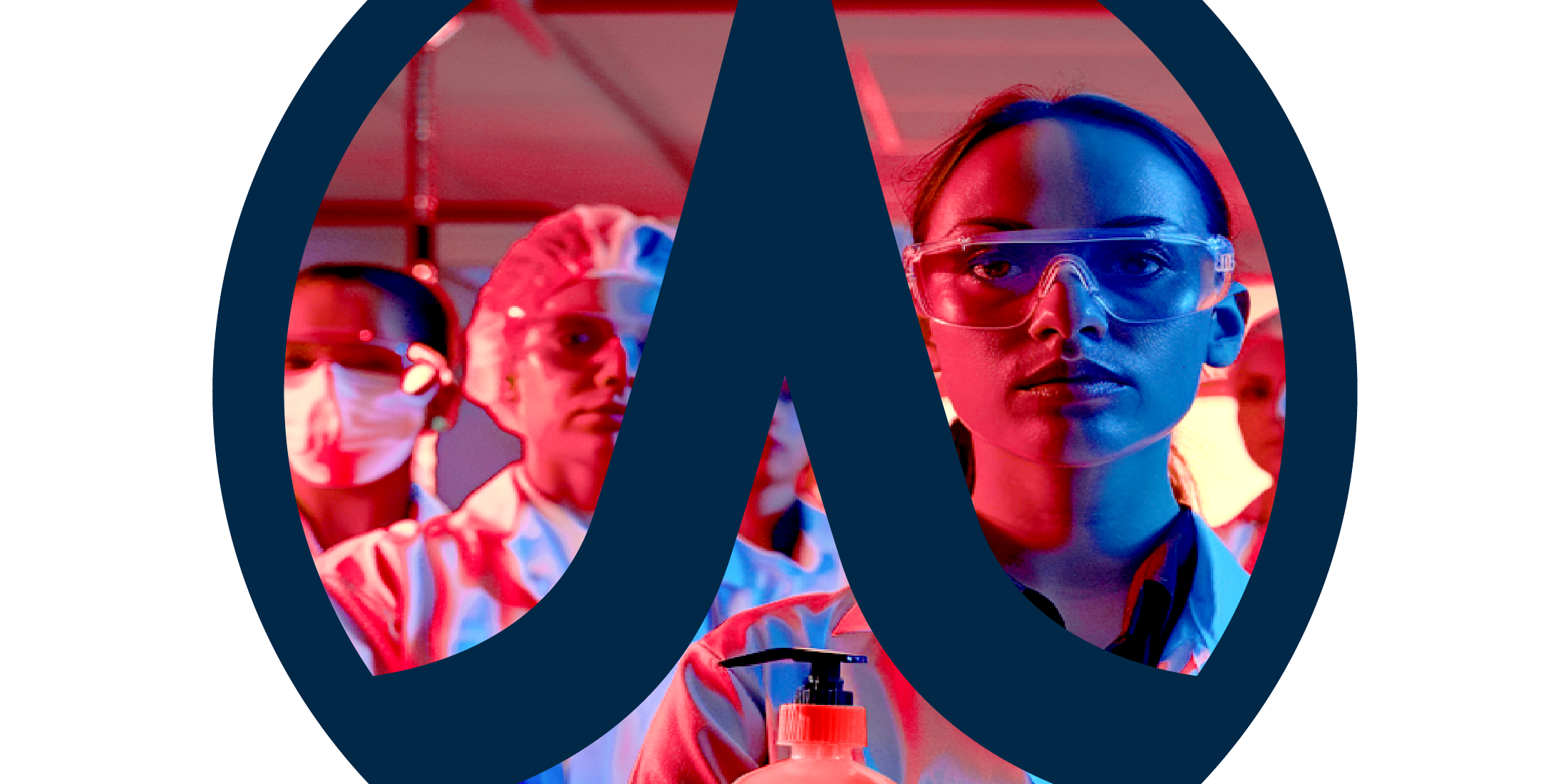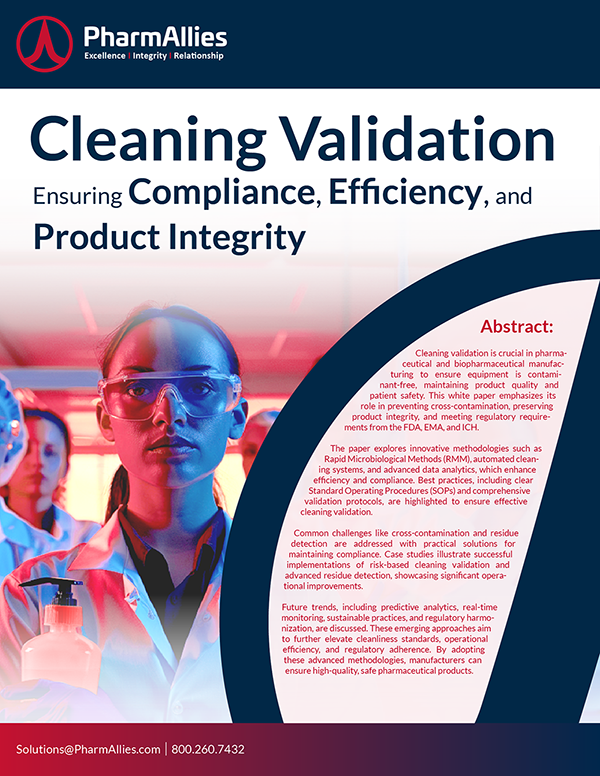Establishing Robust Acceptance Criteria for Cleaning Validation in the Life Sciences Industry
Introduction
Establishing robust acceptance criteria is a critical step in the cleaning validation process. These criteria define the maximum allowable levels of residues on equipment after cleaning and ensure that cleaning processes are effective and compliant with regulatory standards. In this article, I’ll guide you through the process of setting scientifically justified acceptance criteria based on thorough risk assessments, considering factors like residue toxicity and patient safety.
Understanding Acceptance Criteria
Acceptance criteria are predefined standards that determine whether the cleaning process is acceptable. They are based on various factors, including the nature of the residues, their potential impact on product quality, and regulatory requirements. Robust acceptance criteria help ensure that equipment is consistently cleaned to a standard that prevents contamination and ensures product safety.
Importance of Robust Acceptance Criteria
- Ensures Product Quality: Acceptance criteria help maintain the integrity and efficacy of pharmaceutical products by ensuring that residues do not compromise product quality.
- Regulatory Compliance: Setting and adhering to robust acceptance criteria ensures compliance with regulatory bodies like the FDA, EMA, and ICH guidelines.
- Patient Safety: Scientifically justified acceptance criteria protect patients from potential harm due to residual contamination.
- Consistency: Helps maintain consistent cleaning processes and outcomes, reducing variability and risk.
Factors to Consider When Setting Acceptance Criteria
Residue Toxicity
Understanding the toxicity of residues is critical in setting acceptance criteria for cleaning validation. This involves assessing the potential health risks associated with residual contaminants.
- Toxicological Assessment: Conduct a toxicological assessment of residues to determine safe levels of exposure. This includes evaluating the LD50 (lethal dose for 50% of the population) and other relevant toxicological data.
- Threshold of Toxicological Concern (TTC): Use the TTC approach to establish safe exposure limits for residues with limited toxicological data.
Residual Product Potency
The potency of the residual product can significantly impact the cleaning validation acceptance criteria. Highly potent compounds require more stringent criteria.
- Minimum Therapeutic Dose (MTD): Determine the MTD and use it to calculate acceptable residue levels.
- Safety Margins: Implement safety margins to account for variability in cleaning efficiency and analytical methods.
Cleaning Agent Residues
Cleaning agents themselves can leave residues that need to be controlled.
- Chemical Properties: Consider the chemical properties and toxicity of cleaning agents. Ensure that their residues are below levels which could impact product safety.
- Analytical Detection: Ensure that the analytical methods used can accurately detect cleaning agent residues at the set acceptance criteria.
Microbial Contamination
Microbial contamination can pose significant risks, especially for sterile products.
- Microbial Limits: Set tight microbial limits based on product requirements and regulatory guidelines.
- Sterilization Validation: For products requiring sterility, validate that cleaning effectively removes microbial contamination.
Equipment and Process Design
Equipment design and the manufacturing process’s specifics can influence residue accumulation and cleaning effectiveness.
- Hard-to-Clean Areas: Identify and assess areas that are difficult to clean and may harbor residues.
- Process Parameters: Consider process parameters that can affect residue levels, such as temperature, pressure, and cleaning duration.
Steps to Establish Robust Acceptance Criteria
Establishing robust cleaning validation acceptance criteria involves several steps, from initial planning to validation. Here’s how I’ve broken it down step-by-step.
Step 1: Conduct a Risk Assessment
Start by conducting a thorough risk assessment to identify potential contamination risks and determine the critical factors influencing residue levels.
- Risk Identification: Identifying potential residues, such as APIs, cleaning agents, and by-products, which could contaminate the next batch.
- Risk Analysis: Analyze the likelihood and severity of each hazard to prioritize risks. Assess the severity and likelihood of contamination. Use tools like Failure Modes and Effects Analysis (FMEA) to evaluate risks systematically.
- Risk Prioritization: Evaluate the risks to determine which require control through acceptance criteria. Ranking risks based on their impact on product quality and patient safety. Focus on high-risk residues and areas.
Step 2: Gather Toxicological Data
Collect and analyze toxicological data for all residues. This data forms the basis for setting scientifically justified acceptance criteria.
Toxicological Profiles: Develop toxicological profiles for each residue, including acute and chronic toxicity, genotoxicity, and carcinogenicity data.
- Acute Toxicity: Short-term effects, such as immediate allergic reactions or toxicity.
- Chronic Toxicity: Long-term effects from prolonged exposure to residues.
- Genotoxicity: Potential for residues to cause genetic mutations.
- Carcinogenicity: Potential for residues to cause cancer.
- Environmental Impact: Consider the environmental effects of residues, particularly if they enter wastewater systems.
Exposure Limits: Establish safe exposure limits based on toxicological data and regulatory guidelines.
Step 3: Determine Analytical Methods
Select and validate analytical methods to detect and quantify residues at the established acceptance criteria.
Method Sensitivity: Ensure that the analytical methods are sensitive enough to detect residues at the desired levels.
- High-Performance Liquid Chromatography (HPLC): Common for detecting organic residues.
- Total Organic Carbon (TOC) Analysis: Measures overall organic contamination.
- Gas Chromatography (GC): Used for volatile organic compounds.
- Atomic Absorption Spectroscopy (AAS): Detects metal residues.
- Validation Parameters: Accuracy, precision, specificity, linearity, limit of detection (LOD), and limit of quantification (LOQ).
Method Validation: Validate analytical methods to confirm their accuracy, precision, specificity, and robustness.
Step 4: Establish Numerical Limits
Set numerical limits for residues based on the gathered data and risk assessment.
- MTD-Based Calculations: Use the minimum therapeutic dose to ensure residue levels do not affect patient health.
- 10 ppm Criterion: A general rule is that residues should not exceed 10 parts per million (ppm) of the next product.
- Visual Cleanliness: Equipment should also appear visually clean, even if analytical results are within limits.
- Combination of Criteria: Use a combination of numerical limits and visual inspection to ensure thorough cleanliness.
Maximum Allowable Carryover (MACO): Calculate the MACO using the formula (Adjust the formula based on specific requirements and safety margins.).
Surface Area Considerations: Calculate residue limits per unit area of equipment surface to account for different equipment sizes.
Step 5: Document Acceptance Criteria
Document the acceptance criteria clearly and comprehensively. Ensure that they are included in the cleaning validation protocol and related SOPs.
- Criteria Justification: Provide a scientific justification for each acceptance criterion, including toxicological data and risk assessment outcomes.
- SOPs: Include acceptance criteria in standard operating procedures.
- Validation Protocols: Clearly outline how acceptance criteria will be tested during validation.
- Regulatory References: Include references to relevant regulatory guidelines and standards.
Step 6: Validate Cleaning Procedures
Validate the cleaning procedures to ensure they consistently meet the established acceptance criteria.
- Validation Studies: Conduct validation studies under worst-case scenarios, such as maximum residue levels, to demonstrate the effectiveness of the cleaning process.
- Reproducibility: Ensure that cleaning procedures are reproducible and effective under various conditions.
- Deviation Management: Document and address any deviations during validation studies.
- Revalidation: Perform periodic revalidation, especially after significant changes to equipment, cleaning agents, or processes.
Step 7: Implement Continuous Monitoring
Implement a system for continuous monitoring to ensure ongoing compliance with acceptance criteria.
- Routine Testing: Conduct regular inspections to verify cleanliness. Perform routine testing to verify that residue levels remain within the set limits.
- Trend Analysis: Analyze trends in residue levels to identify potential issues and areas for improvement. Use statistical methods to analyze residue levels over time and identify trends.
- CAPA: Implement corrective and preventive actions if residue levels approach or exceed acceptance criteria.
Best Practices for Setting Acceptance Criteria
Use a Risk-Based Approach
Adopting a risk-based approach ensures that resources are focused on the most critical areas.
- Focus on High-Risk Residues: Prioritize residues with the highest potential for harm.
- Dynamic Risk Assessment: Continuously update risk assessments as new information becomes available.
Engage Multidisciplinary Teams
Involve experts from various disciplines to ensure comprehensive criteria development.
- Toxicologists: Provide expertise on residue toxicity and safety.
- Analytical Chemists: Ensure accurate and reliable residue detection.
- Quality Assurance: Oversee compliance with regulatory requirements.
Stay Informed on Regulatory Updates
Keep abreast of updates and changes to regulatory guidelines to ensure ongoing compliance.
- Regulatory Monitoring: Review updates from bodies like the FDA, EMA, and ICH regularly.
- Industry Standards: Follow best practices and standards from industry organizations.
Ensure Clear Documentation
Clear documentation supports transparency and facilitates regulatory inspections.
- Detailed Reports: Document each acceptance criterion’s rationale, methods, and outcomes.
- Accessible Records: Maintain organized and easily accessible records.
Conclusion
Establishing robust acceptance criteria is essential for ensuring the effectiveness of cleaning processes in pharmaceutical and biopharmaceutical manufacturing. Manufacturers can ensure that their cleaning procedures prevent contamination, maintain product quality, and comply with regulatory requirements by conducting thorough risk assessments, gathering toxicological data, determining appropriate analytical methods, and setting scientifically justified numerical limits. Implementing best practices such as a risk-based approach, engaging multidisciplinary teams, staying informed on regulatory updates, and ensuring clear documentation will further enhance the robustness of acceptance criteria. Through diligent and well-documented efforts, pharmaceutical and biopharmaceutical manufacturers can safeguard their products and protect patient health.



